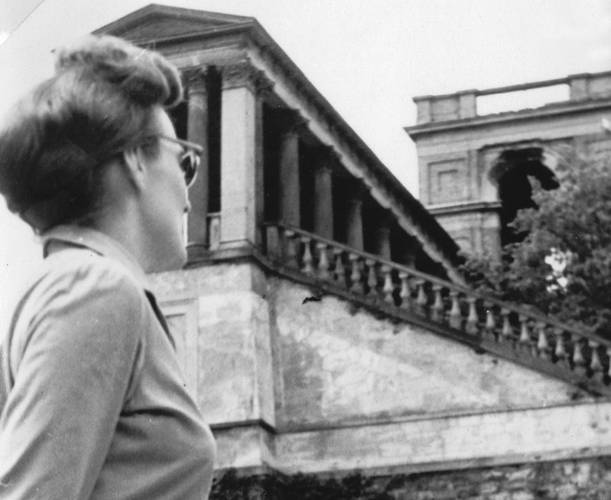When "the reorganization of the world" and the division of Germany were decided at the Potsdam Conference in Cecilienhof Palace in 1945, it had a direct impact on the daily lives of many Potsdam residents. This includes the people in the area around the Pfingstberg, which is now close to the border with West Berlin. The residential and recreational area in the Nauen suburb, which was characterized by villas and parks until the end of World War II, is now transformed into Soviet "Military Town No. 7" with a prison of the Soviet secret service KGB and the headquarters of foreign espionage. Nothing as before: Everyday life on Potsdam's Pfingstberg after 1945
From then on, the residents' work, shopping, and leisure activities were determined by this development. Errands, for example, are run in the "Russenmagazin," a Soviet sales facility intended for members of the army and their families, but also open to GDR citizens. The allotment gardens on the slopes of the Pfingstberg become important private places of retreat and recreation during this period. Addition to the permanent exhibition
Against this historical background, the Belvedere Pfingstberg will host the exhibition "Zwischen Gartenlaube und Russenmagazin. Everyday Life on Potsdam's Pfingstberg 1945-1994" will be shown, which will allow contemporary witnesses from the immediate vicinity of the Pfingstberg to speak. The existing permanent exhibition on the history of the Pfingstberg ensemble in the Belvedere will be supplemented by a room on the ground floor of the West Tower. Here, visitors will learn about twelve multi-faceted life stories of residents via three media stations. The contemporary witnesses
Among them are the director, photographer and screenwriter Franz Baake, who lived in Große Weinmeisterstraße from 1941 to 1951 and experienced the invasion of his residential area by Soviet troops, Matthias Freydank, who spent his childhood and youth in the Villa Henkel, which housed an old people's home in GDR times, and Mario and René Kade, who grew up in Höhenstraße and tell of a carefree childhood in the 1980s. These stories are partly sad and touching, but also witty and humorous and reflect the respective perception of the everyday life experienced.
Exhibition until 31 October daily 10 a.m. - 6 p.m., November/March Saturdays, Sundays and public holidays 10 a.m. - 4 p.m., admission to the castle including exhibition: 6 € / reduced 4.50 €.
Supported with funds from the Federal Foundation for the Reappraisal of the SED Dictatorship.
Supported with funds from the Ministry of Science, Research and Culture of the State of Brandenburg.
